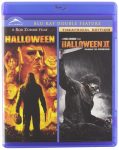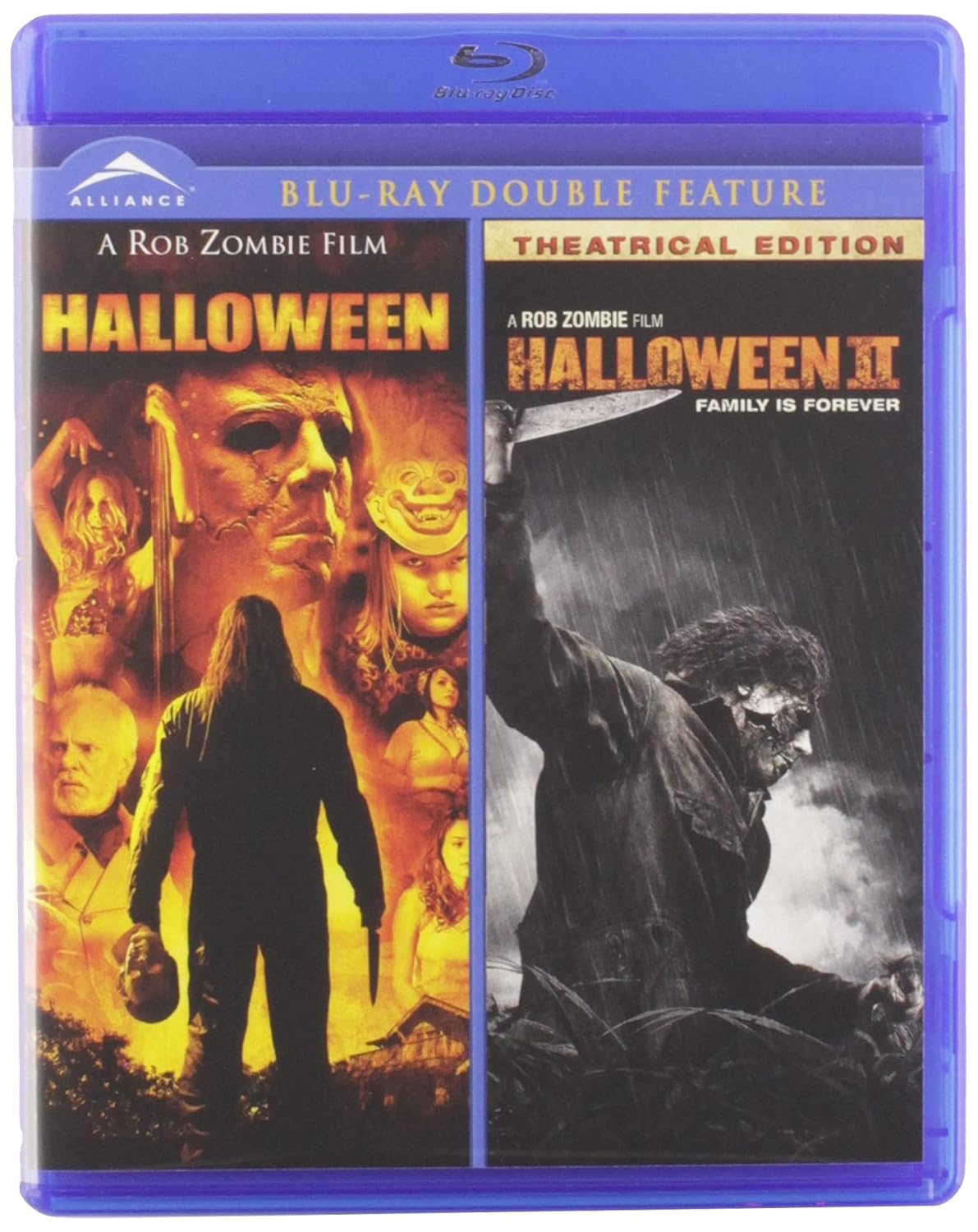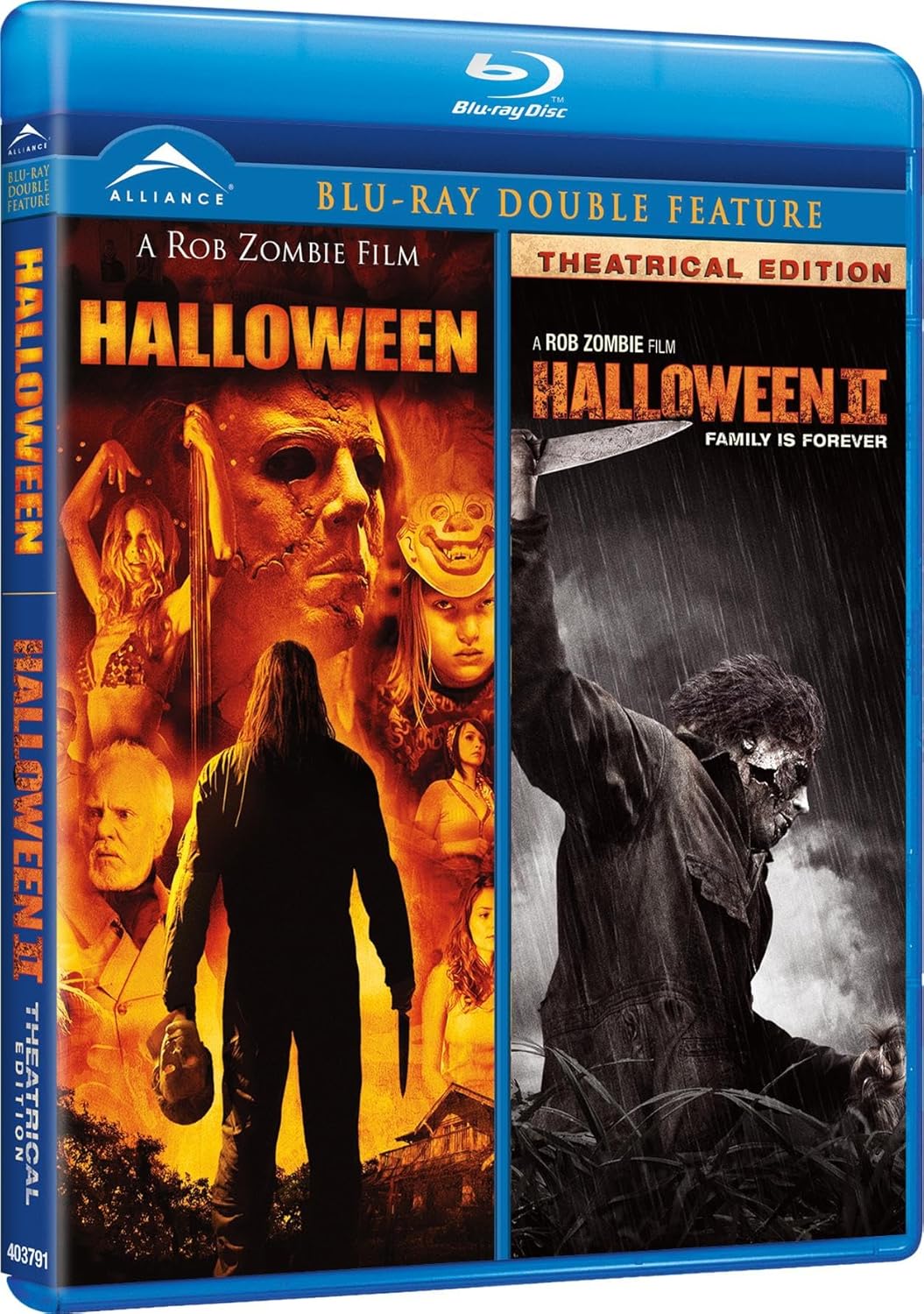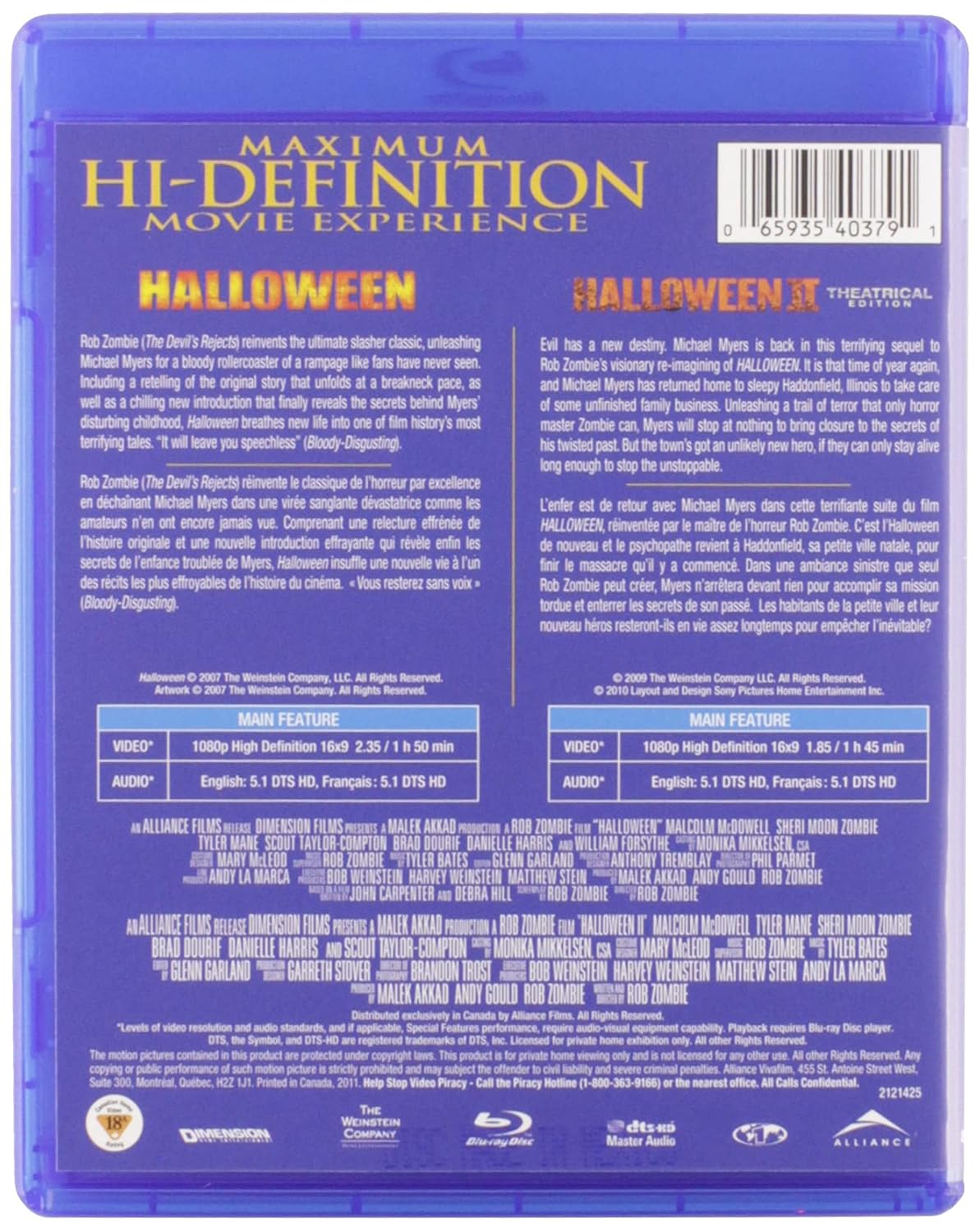
Rob Zombie’s Halloween / Halloween 2 Review Rob Zombie Halloween – Oemiu
Deconstructing the Devil: A Deep Dive into Rob Zombie’s Halloween
The year was 2007. Michael Myers, the boogeyman of Haddonfield, was back on the big screen, but this time, he was reborn through the eyes of Rob Zombie. A director known for his gritty, in-your-face horror style, Zombie took on the daunting task of remaking John Carpenter’s classic Halloween. The result? A film that fiercely divided audiences, sparking debates about its merits as a reimagining, a prequel, and a standalone horror experience. More than a decade later, it remains a controversial entry in the Halloween franchise, prompting endless discussions among horror aficionados. This article aims to dissect Rob Zombie’s Halloween, exploring its narrative choices, its visual style, its impact on the character of Michael Myers, and its overall place within the horror canon, examining the question: did he succeed in breathing new life into a horror icon, or did he fundamentally misunderstand the silent, unknowable evil that made Michael Myers so terrifying?
From Trailer Park to Terror: Michael’s Origin Story
One of the most significant departures from the original Halloween is Zombie’s extensive exploration of Michael Myers’ childhood. The film dedicates a substantial portion of its runtime to depicting young Michael (Daeg Faerch) living in a dysfunctional, poverty-stricken household. We see his abusive stepfather, his stripper mother (Sheri Moon Zombie), and his troubled sister. This portrayal aims to provide a psychological foundation for Michael’s later descent into madness. We witness his early violent tendencies, his fascination with masks, and his growing detachment from reality. This deep dive into Michael’s formative years attempts to answer the question: what made Michael Myers the way he is? While Carpenter’s original film deliberately shrouded Michael’s motives in mystery, leaving the audience to fill in the blanks with their own fears, Zombie offers a concrete, albeit bleak, explanation. This approach is inherently risky. By humanizing Michael, Zombie potentially diminishes the sense of pure, unknowable evil that made him so frightening in the first place. However, it also adds a layer of tragic complexity to the character. We see the product of a broken home, a child failed by the adults in his life, ultimately succumbing to the darkness within. This is a key element to understand when assessing different versions of *Rob Zombie Halloween*. The question then becomes, does understanding the origins of evil make it less terrifying, or does it make it more disturbing? This is a subjective question, and one that lies at the heart of the debate surrounding Rob Zombie’s Halloween. By showing the raw, visceral reality of Michael’s upbringing, Zombie challenges the audience to confront the societal factors that can contribute to the creation of monsters.
Visceral Violence and Visual Style
Rob Zombie’s signature visual style is immediately apparent in his Halloween remake. Gone is the subtle suspense and slow-burn terror of Carpenter’s original. In its place is a raw, brutal, and often shocking display of violence. Zombie employs a gritty, realistic aesthetic, emphasizing the visceral impact of each kill. The blood is thicker, the screams are louder, and the camera lingers on the aftermath of Michael’s rampage. This is a deliberate choice, reflecting Zombie’s desire to create a horror film that feels immediate and unsettling. He achieves this through a combination of intense gore effects, shaky camera work, and a relentlessly bleak atmosphere. The film is visually oppressive, mirroring the psychological torment that Michael inflicts on his victims. Some critics argue that this focus on graphic violence detracts from the film’s overall effectiveness, reducing it to a mere spectacle of gore. However, others contend that it is a necessary component of Zombie’s vision, a way to confront the audience with the brutal reality of violence. Zombie’s use of color is also notable. The film is largely devoid of vibrant hues, opting instead for a palette of browns, grays, and blacks. This reinforces the sense of decay and despair that permeates the film. Even the bright orange of Halloween is muted and desaturated, reflecting the film’s overall sense of unease. Consider the difference in atmosphere between Carpenter’s Halloween, with its crisp autumn air and bright suburban landscapes, and Zombie’s Halloween, with its decaying trailer parks and oppressive shadows. These visual choices contribute significantly to the film’s overall impact, making it a distinctly different experience from its predecessor. It’s this divergence that fuels debates about the essence of *Rob Zombie’s Halloween* and its faithfulness to the original.
Laurie Strode: From Scream Queen to Survivor
Scout Taylor-Compton takes on the iconic role of Laurie Strode in Rob Zombie’s Halloween. While Jamie Lee Curtis portrayed Laurie as a relatively innocent and naive teenager in the original film, Taylor-Compton’s Laurie is more hardened and world-weary. This is largely due to the traumatic events of her childhood, which are explored in greater detail in Zombie’s version. Laurie is haunted by nightmares and visions, and she carries a deep sense of unease. This pre-existing trauma makes her more vulnerable to Michael’s terror, but it also makes her a more resilient survivor. Taylor-Compton brings a raw intensity to the role, portraying Laurie as a young woman fighting to maintain her sanity in the face of unimaginable horror. Her performance is less about screaming and more about quiet desperation and growing resolve. This interpretation of Laurie Strode is a direct reflection of Zombie’s overall vision for the film. He seeks to deconstruct the traditional horror tropes, presenting a more realistic and psychologically complex portrayal of a young woman facing unimaginable evil. However, this approach has also been criticized for stripping Laurie of some of her inherent innocence and vulnerability, qualities that made her so relatable to audiences in the original film. The dynamic between Laurie and Michael is also different in Zombie’s Halloween. While Carpenter’s film suggests a supernatural connection between the two characters, Zombie’s version emphasizes their familial relationship. This adds a layer of incestuous unease to their encounters, making them even more disturbing. Ultimately, Taylor-Compton’s Laurie Strode is a product of Zombie’s reimagining, a character shaped by trauma, violence, and the director’s unique vision. This makes *Rob Zombie’s Halloween* a different beast entirely.
Dr. Loomis: From Authority Figure to Opportunist
Malcolm McDowell steps into the shoes of Donald Pleasence as Dr. Sam Loomis, Michael Myers’ psychiatrist. In Zombie’s Halloween, Loomis is portrayed as a more complex and morally ambiguous character. He is not simply the concerned doctor trying to protect Haddonfield from Michael Myers. Instead, he is also an opportunist who exploits Michael’s story for personal gain. Loomis writes a best-selling book about Michael, becoming a celebrity in the process. This portrayal challenges the traditional image of Loomis as a heroic figure, adding a layer of cynicism to the narrative. McDowell’s performance is nuanced and compelling, capturing Loomis’s intelligence, ambition, and underlying sense of guilt. He is not simply a villain, but a flawed and ultimately tragic figure. This reinterpretation of Dr. Loomis is one of the most controversial aspects of Zombie’s Halloween. Some fans argue that it undermines the character’s inherent goodness, turning him into a self-serving opportunist. However, others contend that it adds a layer of realism and complexity to the story, reflecting the often-murky ethical landscape of the mental health profession. Loomis’s relationship with Michael is also different in Zombie’s Halloween. While Carpenter’s film portrays Loomis as Michael’s nemesis, Zombie’s version explores the doctor’s own complicity in Michael’s transformation. Loomis recognizes the signs of Michael’s growing psychosis, but he is unable to intervene effectively. This adds a layer of tragic irony to the story, suggesting that Loomis may have inadvertently contributed to the creation of the monster he is trying to stop. The difference is night and day when compared with past iterations of *Rob Zombie’s Halloween* characters.
The Legacy and Lingering Questions
Rob Zombie’s Halloween remains a divisive film within the horror community. Some hail it as a bold and original reimagining of a classic, while others criticize it for its excessive violence, its characterizations, and its departure from the spirit of the original. Regardless of one’s personal opinion, it is undeniable that Zombie’s Halloween has had a significant impact on the franchise. It sparked a renewed interest in Michael Myers, leading to the release of several sequels and reboots. It also challenged the traditional conventions of the slasher genre, pushing the boundaries of violence and psychological horror. The film’s legacy extends beyond the Halloween franchise. It has influenced a new generation of horror filmmakers, inspiring them to take risks and challenge audience expectations. Zombie’s unapologetic style and his willingness to explore the darker aspects of human nature have left an indelible mark on the horror landscape. But the question remains: did Zombie succeed in capturing the essence of Michael Myers? Did he add anything meaningful to the character, or did he simply create a different kind of monster? There is no easy answer to this question. Ultimately, it depends on what one values in a horror film. If you are looking for suspense, atmosphere, and a sense of unknowable evil, you may be disappointed by Zombie’s Halloween. But if you are looking for raw violence, psychological complexity, and a challenging exploration of human depravity, you may find it to be a compelling and disturbing experience. It’s this very debate that keeps *Rob Zombie Halloween* relevant and discussed to this day.
| Feature | Carpenter’s Halloween (1978) | Zombie’s Halloween (2007) |
|---|---|---|
| Michael Myers’ Origin | Minimal background, implied evil | Extensive childhood backstory, troubled family |
| Violence | Suspenseful, implied violence | Graphic, visceral violence |
| Laurie Strode | Innocent, naive | Hardened, traumatized |
| Dr. Loomis | Heroic, concerned psychiatrist | Opportunistic, morally ambiguous |
| Overall Tone | Atmospheric, suspenseful | Gritty, brutal |
Frequently Asked Questions
What were the main criticisms of Rob Zombie’s Halloween?
The criticisms directed at Rob Zombie’s Halloween were diverse and often passionate. One of the most common complaints centered on the film’s excessive violence. Many viewers felt that the graphic gore detracted from the suspense and atmosphere that made the original Halloween so effective. Another point of contention was the extensive backstory given to Michael Myers. Some argued that by humanizing Michael, Zombie diminished his mystique and transformed him from an unknowable force of evil into a product of circumstance. Others criticized the characterizations of Laurie Strode and Dr. Loomis, arguing that they were inconsistent with the established canon. Finally, some viewers simply felt that the film lacked the subtlety and artistry of Carpenter’s original, preferring its slow-burn approach to horror. Overall, the criticisms of *Rob Zombie’s Halloween* stemmed from a perceived departure from the core elements of the original film and a focus on shock value over genuine suspense.
How does Rob Zombie’s Halloween compare to John Carpenter’s original?
Rob Zombie’s Halloween is a stark departure from John Carpenter’s original in several key aspects. Carpenter’s film relies on suspense, atmosphere, and the power of suggestion to create a sense of dread. The violence is often implied rather than explicitly shown, leaving much to the viewer’s imagination. Zombie’s film, on the other hand, is much more graphic and visceral. It relies on extreme violence and gore to shock and disturb the audience. Carpenter’s film focuses on the mystery surrounding Michael Myers, leaving his motives and origins largely unexplained. Zombie’s film provides an extensive backstory, exploring Michael’s troubled childhood and his descent into madness. Carpenter’s Laurie Strode is an innocent and naive teenager who is thrust into a terrifying situation. Zombie’s Laurie Strode is more hardened and traumatized, reflecting the film’s overall sense of bleakness. Ultimately, Carpenter’s Halloween is a classic example of suspenseful horror, while Zombie’s Halloween is a more brutal and psychologically intense experience. Whether you prefer one over the other is a matter of personal taste.
Was Rob Zombie’s intention to improve upon the original Halloween?
It’s unlikely Rob Zombie aimed to “improve” on John Carpenter’s Halloween. Instead, his goal seemed to be to offer a distinct and personal interpretation of the material. He frequently spoke about his desire to explore Michael Myers’ backstory and to create a more realistic and disturbing portrayal of violence. Zombie’s vision was clearly different from Carpenter’s, and he made no secret of his intention to put his own stamp on the Halloween franchise. While some viewers may have interpreted this as an attempt to surpass the original, it is more likely that Zombie simply wanted to create a horror film that reflected his own sensibilities and artistic vision. He didn’t try to make something “better”, but something that explored different aspects of a classic horror tale. The intense dissection of Michael’s psyche and environment sets it apart, offering a new, even if polarizing, perspective. It’s the reason why *Rob Zombie’s Halloween* remains a talking point.
What inspired Rob Zombie’s vision for his Halloween remake?
Several factors likely inspired Rob Zombie’s vision for his Halloween remake. He has cited his own troubled childhood and his fascination with true crime as key influences. He wanted to explore the idea of how a person can become a monster and to depict the brutal reality of violence in a way that he felt was lacking in other horror films. He was also influenced by the gritty realism of 1970s horror films like “The Texas Chain Saw Massacre” and “Last House on the Left.” Zombie’s music and his previous films also provide clues to his inspirations. His work often explores themes of violence, alienation, and the dark side of human nature. He is drawn to characters who are marginalized and misunderstood, and he often uses shocking imagery and extreme violence to challenge audience expectations. He also had a desire to put his mark on a story and franchise he admired.
How did fans react to the changes Rob Zombie made to the Halloween story?
Fan reaction to Rob Zombie’s changes to the Halloween story was extremely divided. Some fans appreciated Zombie’s willingness to take risks and to offer a fresh perspective on a classic horror tale. They praised the film’s gritty realism, its psychological complexity, and its intense violence. They felt that Zombie had succeeded in creating a truly disturbing and memorable horror experience. However, other fans were highly critical of the changes. They felt that Zombie had betrayed the spirit of the original Halloween, transforming Michael Myers from an unknowable force of evil into a product of circumstance. They criticized the film’s excessive violence, its characterizations, and its overall tone. They felt that Zombie had failed to understand what made the original Halloween so special and that his remake was a pale imitation. It is this split that sustains discussions around *Rob Zombie Halloween* even today.
Did Rob Zombie direct both Halloween and Halloween II?
Yes, Rob Zombie directed both the 2007 Halloween remake and its 2009 sequel, Halloween II. His involvement in both films allowed him to further explore his vision for the characters and the story. While the remake was a reimagining of the original Halloween, Halloween II took the story in a different direction, exploring the psychological aftermath of the events of the first film. Both films were met with mixed reactions from fans, but they remain controversial and influential entries in the Halloween franchise. Zombie’s distinct style and his willingness to push boundaries have cemented his place as a polarizing figure in the horror genre.
What is the significance of the white horse imagery in Rob Zombie’s Halloween II?
The white horse imagery in Rob Zombie’s Halloween II is a recurring motif that is open to various interpretations. It is most prominently associated with Michael Myers and Laurie Strode, appearing in their visions and dreams. One interpretation is that the white horse represents innocence and purity, which are being corrupted by the violence and trauma of their experiences. The horse could also symbolize death and the supernatural, hinting at a deeper connection between Michael and Laurie. Some view the white horse as a manifestation of Laurie’s fractured psyche, representing her struggle to cope with the events of the first film. Ultimately, the significance of the white horse is ambiguous and open to individual interpretation. Zombie himself has offered little explanation, allowing viewers to draw their own conclusions about its meaning within the context of the film. The unsettling nature of these scenes emphasizes the film’s attempt to explore psychological damage, making the imagery key to understanding the sequel’s darker undertones, influencing the way we perceive *Rob Zombie Halloween*.








![Scary Stories To Tell In The Dark [DVD]](https://oemiu.com/wp-content/uploads/2025/09/1757427628_Scary-Stories-To-Tell-In-The-Dark-DVD-Review-Best-336x220.jpg)
